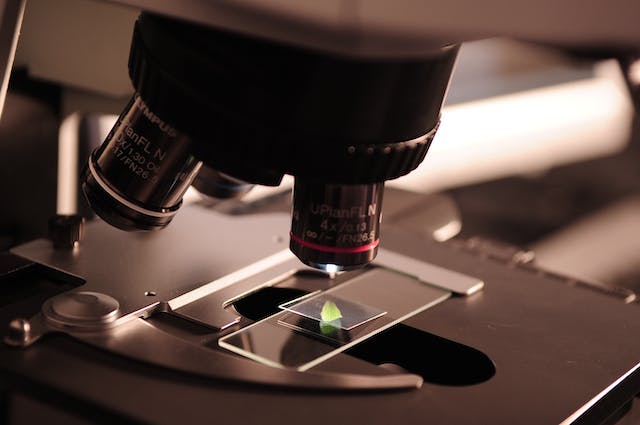Clinical laboratories are at the cutting-edge of medical research and patient care. As centers of excellence where technology meets healthcare, they’re becoming vital resources that ensure accuracy, speed and tailored insights into health issues.
Medical lab professionals make our world more manageable every day. Their work requires attention to detail, an analytical mind and patience as well as quick learning capabilities.
What’s on the Other Side of the Lab Door?
Laboratory environments provide some of the most interesting environments for academic investigation in the world. Scientists here use both cutting-edge and low-tech tools, but the end goal remains the same – new information or insight is always discovered here. Behind a lab door you could find anything from biochemical research to aseptic production of medical products; so what lies beyond?
Laboratories must limit access to authorized personnel as per BMBL and DRM regulations in order to maximize safety and minimize human risks such as pollution, sabotage, accidents or theft of physical or intellectual property.
An essential element in any laboratory, signage is crucial. All labs should display signs that state “Admittance for Authorized Personnel Only,” with their names and telephone numbers of both supervisor and responsible person on them; these should be checked periodically to ensure accuracy. Also, labs may require specific hazard labels that match their work and associated risks, and these must be requested through EHS Safety Portal’s Laboratory Hazardous Materials Sign Request process. Door hardware must comply with both BMBL and DRM policies; this includes fireproof door assemblies with self-closing mechanisms that meet UL listing regulations to help ensure quick exit during an emergency situation.
A Glimpse into a Medical Laboratory
Medical laboratories play a pivotal role in diagnosing, treating and managing patients. By providing objective clinical information about patient health conditions, these laboratories enable physicians and healthcare teams to make more informed decisions regarding patient care.
United States labs operate thousands of certified clinical laboratories. These labs are licensed under CLIA (Clinical Laboratory Improvement Amendments) regulations by Centers for Medicare and Medicaid Services and perform billions of tests each year.
Once they receive an order from a physician, medical lab science professionals collect samples of blood or other body fluids for testing. This may involve needle venipuncture (venipuncture), surgical procedures or even patients bringing samples themselves directly to the lab for processing. Once collected, these samples will then be sent off to different labs depending on which test was requested.
Medical laboratories tend to be located within or nearby hospitals due to their need to be accessible for physicians and patients alike. Hospital layout and lab classifications may differ significantly; however, most clinical laboratories can generally be divided into one of five main categories.
Clinical laboratories conduct different kinds of tests depending on their specialty area. Hematology deals with blood components like red and white cells and platelets; laboratory disciplines related to it include cytology, hemostasis and transfusion therapy. Microbiology detects bacteria, viruses and parasites found in specimens via serology, virology and immunology techniques.
Central clinical laboratory services are also specialise in cytogenetics, molecular diagnostics, and surgical pathology. Cytopathology examines smears of cells from all over the body – such as cervical samples – for signs of inflammation or cancer; molecular diagnostics performs tests such as karyotyping to identify any abnormal chromosomal aberrations within patients’ bodies; while surgical pathology examines organs, limbs, tumors or fetuses that have been biopsied surgically.
Medical laboratory scientists bring invaluable expertise and insights to the diagnosis, treatment and management of patients – making them essential contributors to global health. Their reliable results have the power to change lives or even save them.
A Glimpse into a Research Laboratory
Laboratory equipment and testing procedures are carefully evaluated and reviewed by national scientific and government agencies, to ensure physicians receive accurate and timely test results. Laboratories are staffed by medical technologists, technicians and laboratory assistants working under the direction of a pathologist – an MD specializing in diagnosing disease through tissue sample analysis.
Research laboratories play an integral part in medical advances such as drug discovery and development, medical device innovation, vaccine production and treatments for infectious diseases. Biology and chemistry experts working in these labs use their knowledge to make significant breakthroughs that extend and improve patients’ lives worldwide.
Research laboratories can be found at health or science centers, university campuses or private businesses and typically consist of teams of scientists with varied backgrounds and interests – postdocs, graduate students, undergraduate students and research assistants are common roles within a lab environment. Some scientists possess advanced degrees such as Ph.Ds (Doctorate in Philosophy), while others hold bachelor’s or master’s degrees while working under supervision of those holding such advanced credentials as Ph.Ds (doctorates).
The design of a research laboratory depends on its purpose and the needs of researchers. Some labs may feature designated zones for specific types of studies – for instance hematology and microbiology tests may require separate areas – while other designs allow flexibility by employing movable casework which can be reconfigured as necessary.
A laboratory typically contains sophisticated instruments and equipment used for identifying and quantifying (quantitative testing) chemical substances found in blood, spinal fluid, urine, sputum wound fluids or other body fluids. A lab may also be used for growing bacteria or viruses to be identified and characterized.
Laboratories must comply with various federal and local regulations in areas like laboratory standards, waste management, biohazard handling and facility staff awareness of any changes to these rules. It’s crucial for facility employees to stay abreast of these developments as changes arise.
A Glimpse into a Clinical Laboratory
Medical laboratories (also referred to as clinical labs) are healthcare facilities that specialize in processing samples (such as blood, urine, spinal fluid, sputum or feces) submitted from patients for diagnostic, treatment and management purposes. Most labs are located either inside hospitals or nearby for convenient patient access and physician use.
One key element of this course is introducing students to various laboratory areas through hands-on, interactive sessions with pathology residents, faculty and staff. Through these interactions, they gain exposure to bench functions of tests offered by each laboratory section as well as clinical application and interpretation of test results.
This year, students took an afternoon tour of several core labs including hematology, clinical chemistry and transfusion medicine/blood bank. Instructors gave general introductions and testing services before leading students through each lab’s equipment section by section. Furthermore, these instructors discussed considerations within each laboratory such as software/informatics, automation/reporting requirements as well as regulatory inspection requirements and more.
Students participating in the microbiology rotation were exposed to various diagnostic approaches within clinical laboratory science. For instance, they learned the difference between contaminating and true bacteria, how to differentiate them using various stains and methods and how microbiologists might collaborate with infectious disease clinics to help determine the most suitable course of action for significant infections.
All the laboratories visited as part of LAB M 680 were delighted to welcome medical students into their world of the laboratory and give them a taste. It was particularly impressive to witness many students, particularly those without prior exposure beyond classroom lectures, enjoy this hands-on experience and connect with material in meaningful ways. A special thank you must go out to all instructors who contributed time and resources towards this class!



